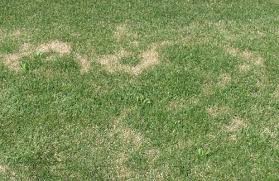 As winter draws to a close and temperatures rise, your lawn may not grow like you hoped. Wet winter conditions are perfect for harboring molds that can kill your grass, and by the time it appears, there’s not much you can do. These tips will help you identify the underlying causes of these diseases and address them with changes to your lawn care.
As winter draws to a close and temperatures rise, your lawn may not grow like you hoped. Wet winter conditions are perfect for harboring molds that can kill your grass, and by the time it appears, there’s not much you can do. These tips will help you identify the underlying causes of these diseases and address them with changes to your lawn care.
What Causes Winter Turf Diseases?
These diseases don’t appear in winter, but they’re directly caused by high levels of moisture during the winter months. Mold growth mostly happens when there are heavy snows before the ground freezes. When the snow thaws, it completely soaks the soil. This creates the perfect conditions for mold growth. These diseases mostly show up in the upper Midwest. However, a mild winter in more northern states or heavy rain in warm climates can create the conditions these molds need to thrive.
While you can’t control the weather, they are ways you can adjust your lawn care strategy to reduce infections. Overfertilizing in fall makes grass hold more moisture, which can feed mold. The issue usually isn’t applying too much fertilizer, but applying fertilizer that acts too fast. Even cool-season grasses grow slower as temperatures drop, slowing nutrient absorption. Shifting away from synthetic to organic fertilizers will usually solve this problem. Remember to check the hopper settings on your Billy Goat overseeder if you’re spreading pelleted fertilizer. If you’re making two passes for coverage, it should be set to half of the recommended drop rate.
Cutting the lawn short before the first snow helps water evaporate. However, cutting too low damages crowns, making the grass more susceptible to infection. Approach the end of the growing season the same way you would when aerating or dethatching your lawn. You want to maximize soil exposure while leaving the leaf structure intact, and you want to work toward this height while trimming no more than 1/3 of the grass’ total length.
There are two main types of winter molds: snow mold and red thread. Here’s how you can identify and deal with each mold.
Snow Mold
Gray and pink snow mold appears at the end of winter or early spring as the snow begins to thaw. This damage appears as large rings of dead grass. Gray mold only attacks leaves, while pink mold attacks the entire grass plant. These molds mostly affect cool-season grasses, particularly fescue and Kentucky bluegrass.
Fungicides are ineffective once the mold starts killing grass in the spring. If you’ve had problems in the past with snow mold, apply a fungicide in the fall to stop spores. The application needs to be at least two weeks before overseeding. Otherwise, grass growth may be hampered, and you could end up spreading surviving spores during soil preparation.
As the snow thaws, gently rake the grass gently to remove matting. This helps the grass and soil dry out faster. If you use a power rake, keep it at the highest setting and go slow to keep from pulling grass out of the wet soil.
Red Thread
Red thread mostly affects cool-season grasses like Kentucky bluegrass, red fescue, ryegrass, and bentgrass. However, this fungal disease can grow on almost any grass variety. Spores usually appear when temperatures are in the mid-60s to low 70s.
At first glance, the grass may look dead, but it’s just spore coverage. In its first stage, the fungus appears as thread-shaped branches across the grass blades. In its second stage, the threads are replaced by fuzzy pink growths at the base of the grass blades. This can be confused with pink snow mold from a distance. Look closer, and you should see branched structures on these growths.
If you see spores, stop their spread by using a bagging mower when cutting grass, or by picking up clippings with a lawn vacuum.
Use a soil test to check your lawn’s nitrogen and pH. Low nitrogen levels slows grass growth, opening up plants to the disease, while acidic soil promotes fungus growth. Getting soil pH to between 6.3 and 7 seriously hampers mold growth.
Red thread stays dormant in thatch. While removing thatch won’t remove all the spores, good thatch management will keep infections at bay. Removing leaves in the fall and mulching grass clippings can help micronutrients break down thatch. Overfertilizing can lead to excessive thatch. This will boost the spread of spores, even if fertilizing brings nitrogen levels back in line.
We Can Help You Get More from Your Billy Goat Equipment
For dethatching, aerating, lawn cleanup, overseeding and fertilizing, your Billy Goat equipment is critical to the maintenance of your lawn. When you need to fix this equipment, you need Billy Goat Parts. We’re an authorized Billy Goat, Honda, Subaru, and Briggs & Stratton dealer. That means we offer OEM replacements for everything on your equipment. Visit us at www.billygoatparts.com. We ship across the United States and Canada.
